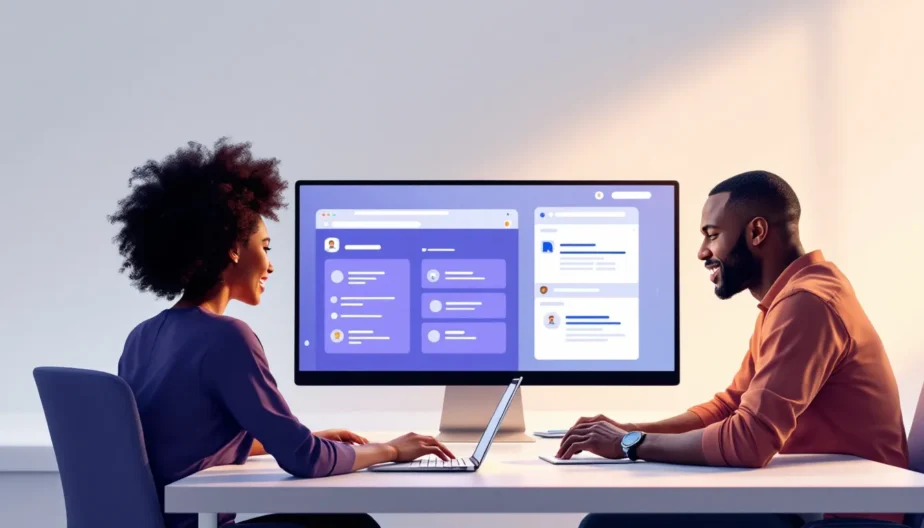Supercharge your workplace collaboration with Microsoft Teams and SharePoint integration. Here’s what you need to know:
- Teams is your digital office for chat and video calls
- SharePoint is your file cabinet and internal website builder
- Connecting them gives you seamless file access and teamwork
Key benefits of integration:
- Access SharePoint files directly in Teams channels
- Chat about and edit documents in real-time
- Keep Teams content organized with SharePoint’s tools
What you need to get started:
- Microsoft 365 subscription (Business or Enterprise plan)
- Proper permissions (Microsoft 365 Group membership, SharePoint admin role)
Quick setup steps:
- Create SharePoint team sites
- Add SharePoint content to Teams channels
- Configure Teams file storage settings
| Feature | Teams | SharePoint | When Combined |
|---|---|---|---|
| Communication | Chats, calls | Limited | Discuss files in context |
| File storage | Basic | Advanced | Access SharePoint files in Teams |
| Organization | Limited | Robust | Keep Teams files tidy |
Remember: Teams needs SharePoint to truly shine. Don’t try to use them separately!
Stay tuned for upcoming AI features in both platforms to further boost your productivity.
Related video from YouTube
How Teams and SharePoint work together
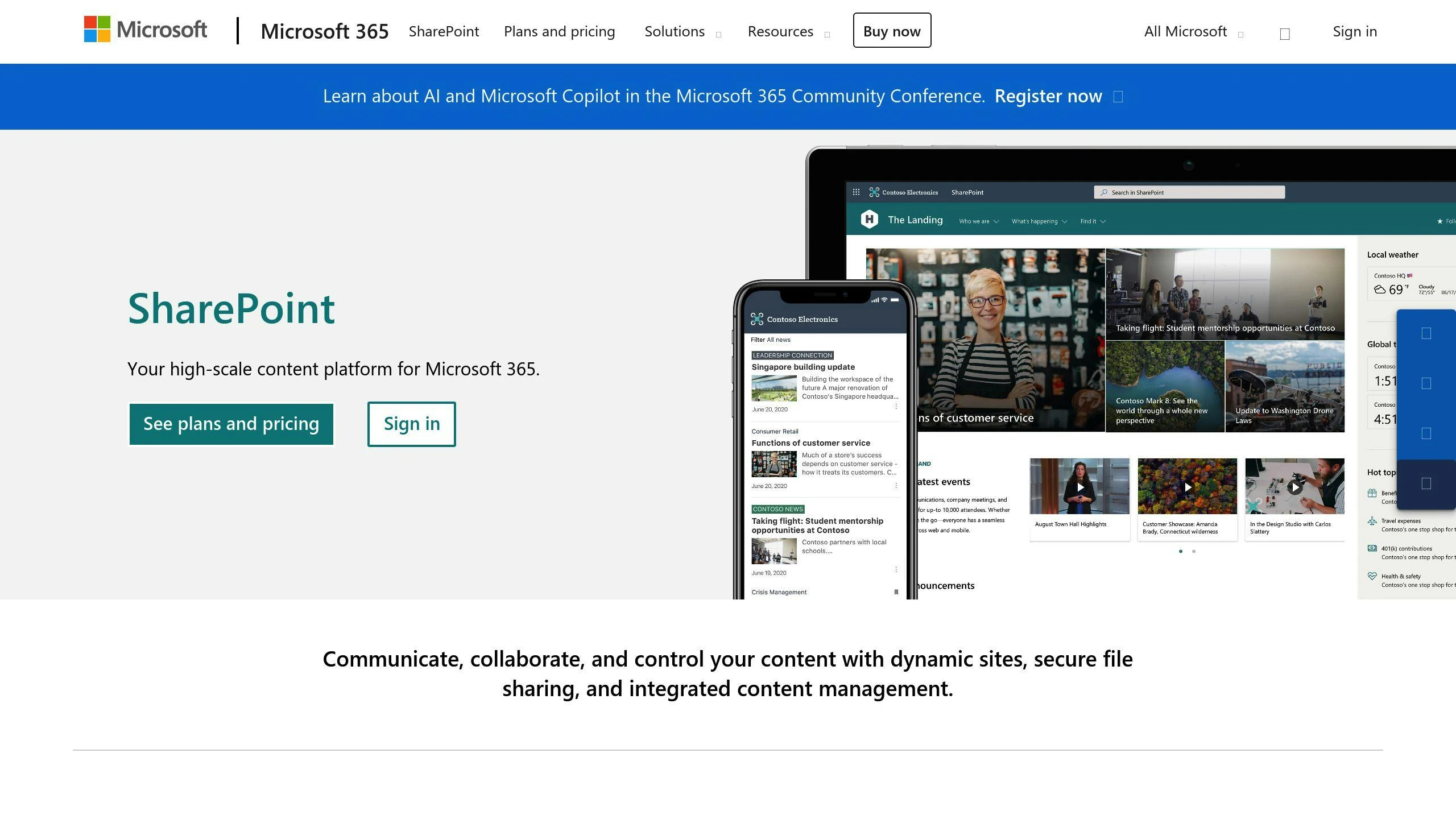
Teams and SharePoint are a dynamic duo. They team up to supercharge collaboration and file management. Here’s the scoop on their connection:
Key connection features
When Teams and SharePoint join forces, you get:
- A SharePoint site for every team you create in Teams
- Teams files stored in SharePoint (hello, powerful file management!)
- Separate document libraries for each Teams channel
- Real-time document editing right in Teams
Why it’s awesome
This teamwork brings some serious perks:
| Benefit | What it means for you |
|---|---|
| One-stop shop | All your files in one place, whether you’re in Teams or SharePoint |
| Tidy files | Use SharePoint’s organization tools to keep Teams files in check |
| Seamless teamwork | Chat about files in Teams while editing together |
| Control access | Use SharePoint’s permissions to decide who sees what |
Think of Teams as your chat central and SharePoint as your file guru. Together, they let you:
- Discuss a document in Teams, then edit it without app-hopping
- Use SharePoint’s search to find files mentioned in Teams chats
- See updates instantly, whether you’re in Teams or SharePoint
It’s like having your cake and eating it too – great communication AND top-notch file management.
What you need before connecting
Before linking Teams and SharePoint, make sure you have:
Permissions and access
You’ll need:
- Microsoft 365 Group membership
- SharePoint site collection admin role
- Azure AD account
"Membership in a Microsoft Team is determined by being a member of a Microsoft Group", says Microsoft. "There are two types of membership within a Microsoft Group: Owners and Members."
For public sites, owners become site collection admins. Members join the SharePoint site’s members group. Private sites work similarly, but with tighter controls.
Microsoft 365 subscriptions
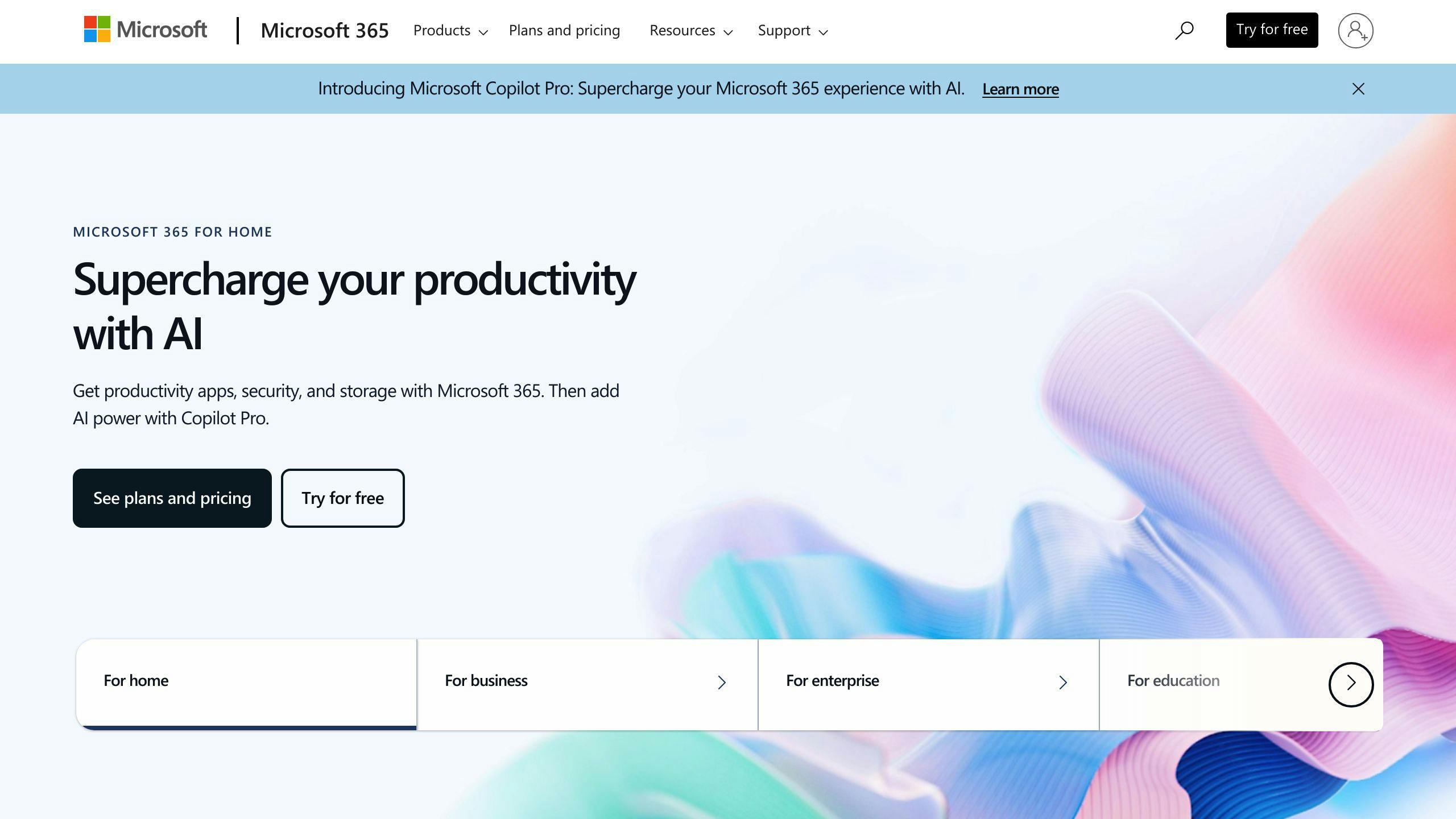
You’ll need one of these:
| Plan Type | Subscriptions |
|---|---|
| Small Business | M365 Business Basic, Standard, Premium |
| Enterprise | O365 E1, E3, E5, F3; M365 E3, E5, F1, F3 |
| Education | M365 A3, A5; O365 A1, A3, A5 |
| Developer | O365 Developer |
Plan features:
1. SharePoint Online Plan 1 ($5/user/month)
- Basic document management
- Team sites
- 1 TB org storage + 10 GB per license
2. SharePoint Online Plan 2 ($10/user/month)
- Plan 1 features
- Advanced search
- Unlimited storage
- eDiscovery
3. Office 365 E3 ($20/user/month)
- Plan 2 features
- Desktop Office apps
- Email hosting
- Advanced security
Pick a plan that fits your team size, needs, and budget. Your IT admin will need to activate Teams after getting the right license.
Step-by-step connection guide
Setting up SharePoint for Teams
1. Create team sites:
Open SharePoint Online and click "Create site". Choose "Team site", then set the site name and permissions.
2. Configure permissions:
Head to site settings, click "Site permissions", and add or remove users/groups as needed.
Adding SharePoint content to Teams
Want to add SharePoint pages, libraries, or lists to Teams? Here’s how:
- Open Teams and go to your channel
- Click the "+" icon for a new tab
- Pick "Website" app
- Name the tab and paste the SharePoint URL
- Hit "Save"
For document libraries:
- In Teams, click "+" in the channel
- Choose "Document Library"
- Pick the SharePoint library to link
- Click "Save"
Adjusting Teams for SharePoint
1. Change channel settings:
Click "…" next to the channel name, select "Manage channel", and tweak settings as needed.
2. Configure file storage:
Go to Teams admin center, select "Teams" > "Team policies", and set file storage options.
3. Set up SharePoint sync:
Open your SharePoint site, click the "Sync" button, and follow the prompts to enable OneDrive sync.
Tips for Teams-SharePoint connection
Organizing files and content
Keep your Teams-SharePoint setup clean:
- Use clear names for folders and files
- Create a logical folder structure
- Use metadata tags for better search
Here’s how a marketing team might organize their SharePoint library:
- Marketing Assets
- Campaigns
- Summer 2024
- Holiday 2024
- Branding
- Social Media
- Campaigns
Managing who can access what
Control access to your content:
- Use SharePoint’s security groups: Visitors (Read), Members (Edit), Owners (Full Control)
- Give users only the permissions they need
- Review and update permissions regularly
Pro tip: Use groups for permissions instead of individual users. It’s simpler and less error-prone.
Improving teamwork on documents
Boost collaboration:
- Enable version history to track changes
- Use @mentions in comments
- Set up alerts for important changes
- Pin crucial files to the top of Teams channels
Advanced connection methods
Power Automate and Microsoft Graph API offer powerful tools for custom processes and complex connections between Teams and SharePoint.
Power Automate for custom processes
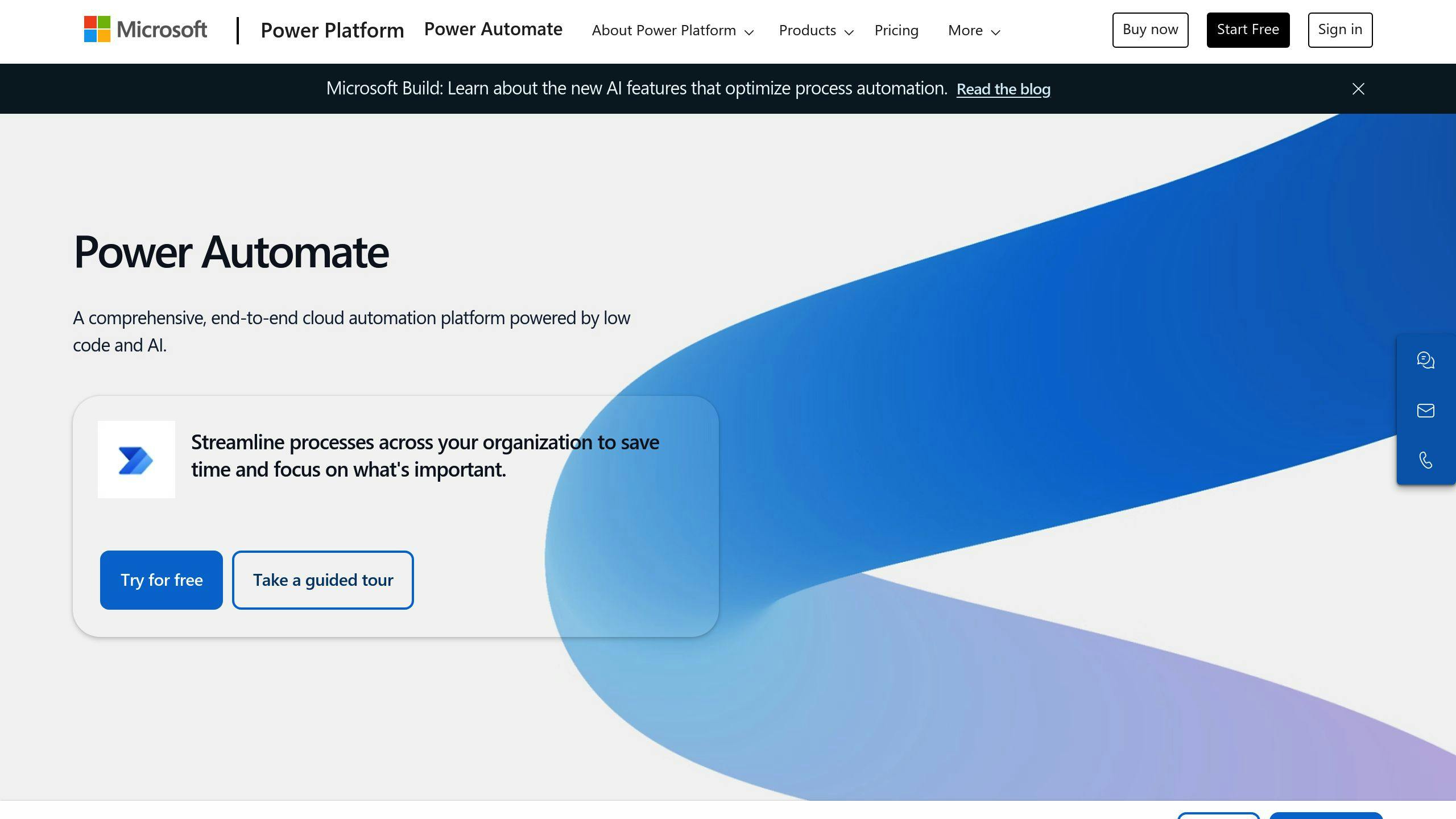
Power Automate lets you create automated workflows. Here’s how:
1. Set up approval processes
Create flows that request approval for new SharePoint documents. This keeps your team informed and streamlines document management.
2. Use adaptive cards in Teams
Make interactive cards for Teams channels. For example:
{
"type": "AdaptiveCard",
"body": [
{
"type": "TextBlock",
"text": "New document uploaded"
},
{
"type": "Input.Text",
"id": "comment",
"placeholder": "Add a comment"
}
],
"actions": [
{
"type": "Action.Submit",
"title": "Approve"
}
]
}
This card pops up in Teams when someone adds a new document to SharePoint. It’s great for quick approvals and comments.
3. Automate file organization
Set up flows to move files to specific SharePoint folders based on metadata or approval status. No more manual sorting!
To start using Power Automate in Teams:
- Click More added apps (…)
- Find "Power Automate"
- Hit Add for me and follow the steps
Microsoft Graph API for complex connections
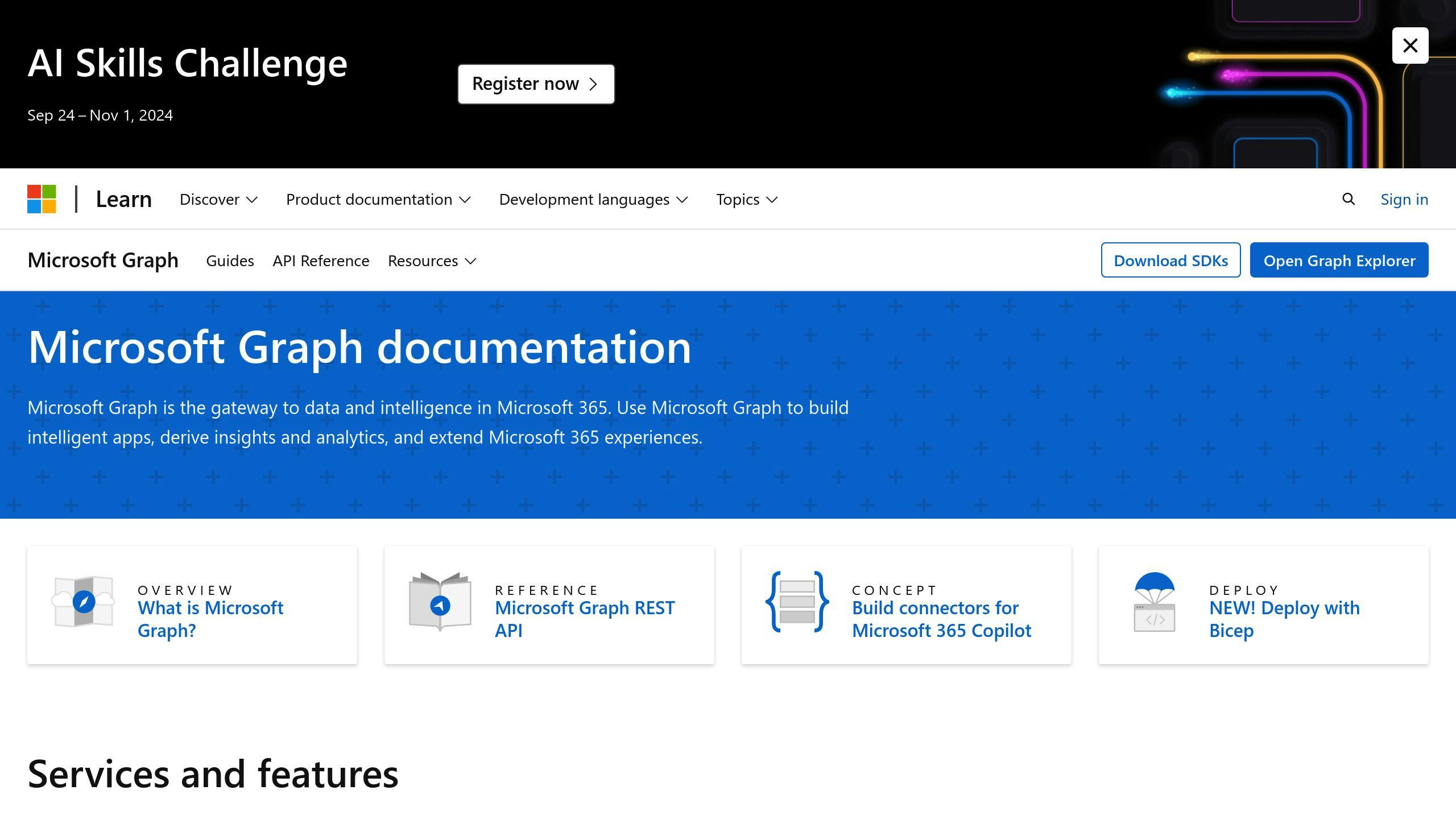
For the tech-savvy, Microsoft Graph API offers even more control:
1. Custom SharePoint access
Use site-level permissions to access specific SharePoint content. It’s safer because you’re not exposing all your data.
Here’s an API call to get a SharePoint site:
GET https://graph.microsoft.com/v1.0/sites/{site-id}
2. Automate team creation
Use Graph API to create Teams and SharePoint sites programmatically. Set up permissions and channels automatically.
3. Build custom apps
Create apps that use both Teams and SharePoint data. For example, show SharePoint list data right in a Teams tab.
To use Graph API:
- Register an Azure Active Directory app
- Give it the right permissions
- Make API calls to get your data
sbb-itb-8be0fd2
Fixing common connection problems
Teams-SharePoint integration can be tricky. Here’s how to fix the most common issues:
Solving permission conflicts
Can’t access SharePoint content in Teams? Try these:
1. Check user access
Use the "Check User Access" tool to spot problems.
2. Verify and adjust permissions
Use SharePoint’s "Check Permissions" feature. Grant needed permissions or remove and re-add the user if necessary.
3. Fix site user ID mismatches
If you’ve deleted and recreated a user account, remove the user from the site and re-grant permissions.
Fixing syncing issues
Sync problems? Here’s what to do:
1. Restart the sync
Close Teams and SharePoint, then reopen and try again.
2. Sync in batches
For lots of files, sync in smaller groups.
3. Check file specs
Make sure:
- Files are under 15GB
- Paths are less than 400 characters
- File names don’t have weird characters
4. Reset OneDrive
If all else fails, unlink and re-link your computer to OneDrive.
Resolving file access problems
Can’t get to your files? Try this:
1. Check SharePoint site access
Make sure you have the right permissions. No sync option? Talk to the site owner.
2. Update OneDrive
Keep your desktop app up to date.
3. Check your firewall
Make sure it’s not blocking Teams and SharePoint URLs and ports.
4. Fix shared link issues
If shared links are acting up, remove the user from the site and re-share the file or folder.
Getting the most out of connected features
Teams and SharePoint work together to supercharge your collaboration. Here’s how to use these tools like a pro:
Real-time document editing
Want to work on a file with your team at the same time? Here’s how:
- Open a document in Teams
- Hit "Edit"
- Choose Teams, Desktop App, or Browser
Now you’re all editing together. It’s that simple.
"Changes show up instantly for everyone. It’s like magic for teamwork." – SharePoint Diary
Quick tips:
- Use the same Office version
- Set the right permissions
- Turn on auto-save (don’t lose your work!)
@mentions and comments
Need someone’s attention? Use @mentions:
- In Teams: Type @ + name
- For groups: Use @general, @team name, or @channel name
- In emails: @ + name adds them to the To line
When working on docs:
- Comment with @mentions to tag people
- They’ll get an email with a direct link
- They can reply by email or in the doc
Version history and tracking
SharePoint’s version history is your safety net:
- Tracks who changed what and when
- Lets you go back in time if needed
- Keeps a record for transparency
How to use it:
- Open your doc in SharePoint
- Click "Version History"
- Check out old versions or restore them
Here’s a real story:
A team member accidentally deleted important stuff from a doc. No sweat – a colleague used version history to bring it back in minutes. Crisis averted!
Safety and rule-following in connection
Connecting Teams and SharePoint is great, but you need to be careful about safety and following rules. Here’s what to focus on:
Keeping data safe across platforms
When you mix Teams and SharePoint, protecting data becomes super important. Here’s what to do:
- Set up retention policies to stop important data from being deleted
- Use Information Rights Management (IRM) to control sensitive documents
- Turn on Multi-Factor Authentication (MFA) for extra security
"MFA can block over 99.9% of account compromise attacks." – Microsoft
Setting up data keeping rules
To follow industry rules and your own policies, set clear data retention rules:
1. Figure out how long you need to keep different types of data
2. Use SharePoint’s retention settings to automatically keep or delete content
3. Use retention labels for more control over specific items
4. Review data before it’s automatically deleted to avoid losing important stuff
Managing sharing with outsiders
Sharing with people outside your company is useful, but you need to be careful:
- Adjust sharing settings in Microsoft Entra ID, Teams, and SharePoint
- Use secure external sharing with one-time codes
- Allow or block specific domains for sharing
- Let only certain groups share externally
Here’s a quick look at sharing options:
| Feature | Guest account | Ad hoc external recipient |
|---|---|---|
| Access shared files | Yes | Yes |
| Verify access | Sign in to Microsoft 365 | Enter one-time code |
| Actions audited | Yes | Yes |
| Can edit in Microsoft 365 apps | Yes | No |
| Controlled by Conditional Access policies | Yes | No |
What’s coming next
Microsoft is beefing up Teams and SharePoint integration. Here’s the scoop:
New features on the horizon
Microsoft’s cooking up some tasty updates:
- AI agents in SharePoint: Coming October 2024. These smart helpers will create and share content without you needing to code. Set them up to answer questions and summarize info from your SharePoint files.
- Smarter document handling: September 2024 will bring better version control, saving you storage space.
- Sign docs easily: June 2024 introduces DocuSign and Adobe Acrobat Sign integration. Get and track signatures without breaking a sweat.
- Make it yours: By September 2024, you’ll be able to create custom fonts and themes in SharePoint Online. Your team sites will look sharp.
Gearing up for Microsoft 365 Copilot
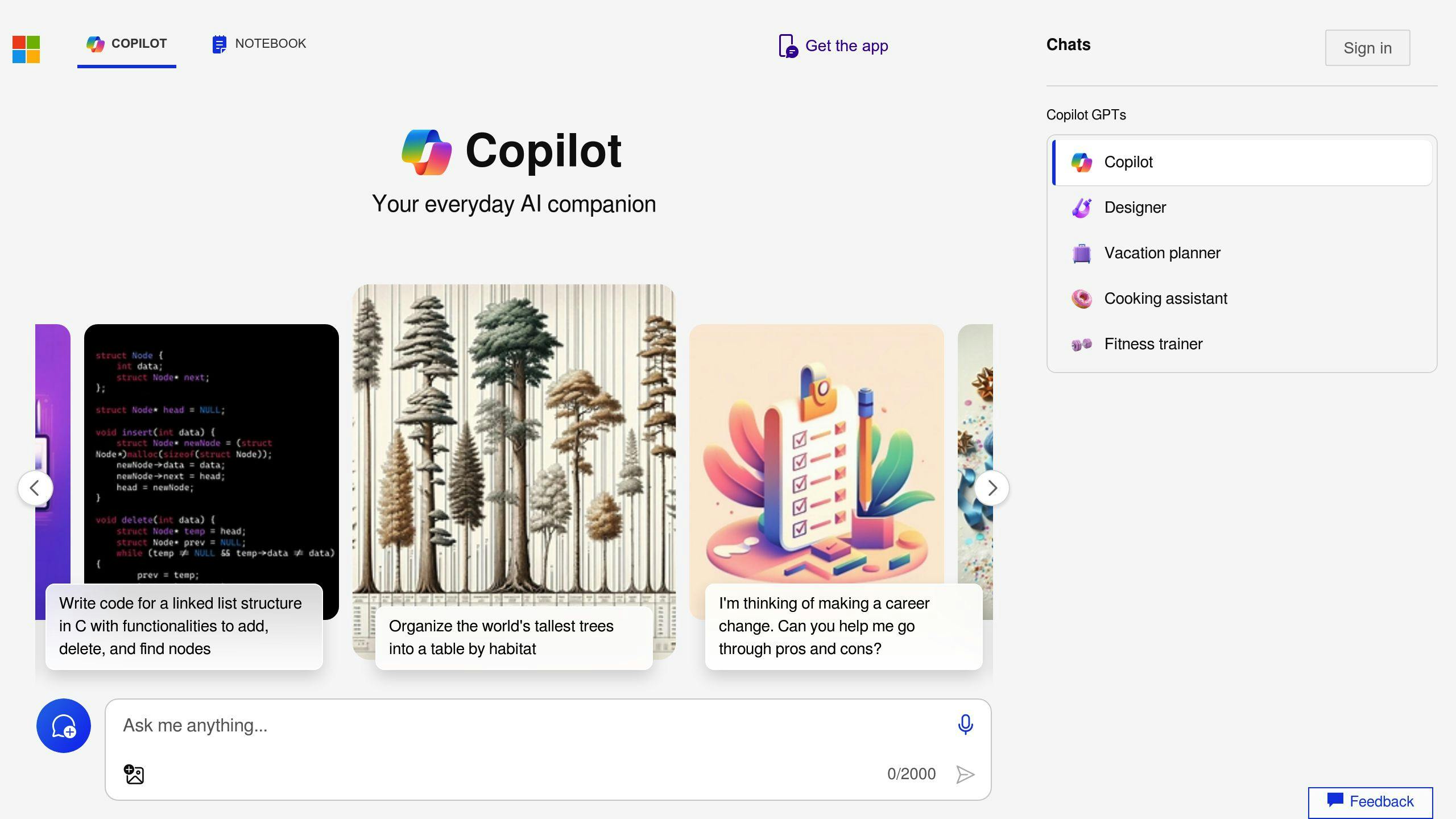
Copilot’s coming to shake things up. Here’s how to get ready:
1. Know what it can do
Copilot will:
- Speed up content creation in SharePoint
- Search Teams chat history using time-based phrases
- Whip up meeting notes and tasks
2. Budget for it
The basic Copilot for SharePoint is part of a $30 per user, per month package.
3. Tidy up your data
Organize your company info in Microsoft 365. It’ll help Copilot work its magic.
4. Prep your team
Show your coworkers the ropes. Maybe run some workshops or create quick guides.
5. Start small
When Copilot lands, test it with a small group first. Iron out the kinks before going big.
"The future of SharePoint brings powerful, intuitive, and expressive experiences with fewer manual steps and the help of AI." – Jeff Tapper, Microsoft
Wrap-up
Microsoft Teams and SharePoint integration packs a punch for modern workplaces. It’s all about working smarter, not harder.
Here’s the deal:
- Files shared in Teams? They’re automatically in SharePoint. No more file hunting.
- Need to work on a doc with your team? Do it right in Teams. No app-switching required.
- All your project stuff in one place? You bet.
Want to squeeze the most out of this combo?
1. Teams and SharePoint sites go hand-in-hand. Create a team, get a site. Simple.
2. SharePoint libraries in Teams tabs? It’s like having your cake and eating it too.
3. SharePoint’s not just a pretty face. Use its version control and co-authoring features.
4. Keep your files tidy. SharePoint’s got the tools to help.
5. Get your team up to speed. The better they know these tools, the smoother things run.
This isn’t just about fancy tech. It’s about changing how your team works. Break down those info walls and watch collaboration soar.
And heads up: Microsoft’s cooking up some AI goodness for SharePoint and Teams. Stay tuned – it’s gonna be big.
FAQs
Can I co-author documents in Teams?
Yes, you can. Here’s how:
- Open your file in Teams
- Click "Edit"
- Choose where to edit: Teams, Desktop App, or Browser
Now you and your team can work on the same document at once. You’ll see each other’s changes as they happen.
Can multiple people edit a SharePoint file simultaneously?
You bet. With Microsoft 365 (using OneDrive or SharePoint), your team can edit Word docs, Excel sheets, or PowerPoint presentations together, in real-time.
How do I integrate SharePoint with Teams?
It’s simple. You can add SharePoint pages, lists, and document libraries as tabs in Teams channels. This lets your team:
- See SharePoint pages
- Edit lists
- Work on shared files
- Add comments
All without leaving Teams. It’s a great way to keep everything in one place.
